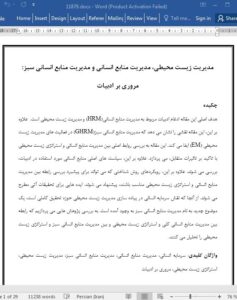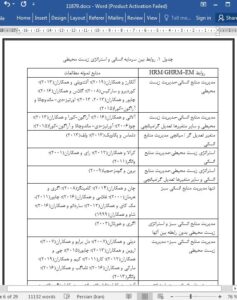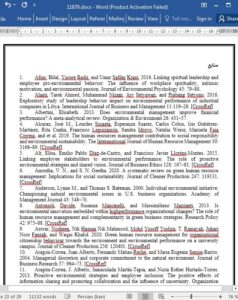Abstract
The main purpose of this paper is to integrate the literature on human resource management (HRM) and environmental management. Moreover, the paper shows the role that green human resource management (GHRM) plays in environmental management activities. This article examines the main relationships between human resource management and environmental strategy, emphasizing reciprocal influences. Moreover, the main human resource practices used in the literature are examined. In addition, methodological approaches that can be appropriate to advance the study of the link between human resource management and environmental strategy are proposed. Ideas for future research are also provided. As the role of human capital in implementing environmental management is a mature field of research, a new topic known as green human resource management has emerged. We examine studies that analyze both the relationship between general human resource management and environmental strategy and between green human resource management and environmental strategy.
1. Introduction
A relevant topic in the management field is environmental management. Due to important environmental problems (e.g., climate change, pollution, overconsumption of natural resources, deforestation, etc.), companies are integrating environmental issues into their corporate and competitive strategies (Bansal and Gao 2006; Hoffman and Bansal 2012). Moreover, the relationship between voluntary environmental practices (e.g., environmental management systems), competitive advantage and financial performance has received increasing attention not only from academics but also from practitioners, with an important debate on environmental management and firm competitiveness (Dwyer et al. 2009; Albertini 2013; Martín-de Castro et al. 2016).
4.2. Implications for Managers
Our article shows that employees may influence the implementation of environmental management. It is important to know the perceptions of employees to promote the implication of environmental behaviors. Firms should analyze how they may modify their internal infrastructures to champion environmental behaviors (Cantor et al. 2012) and employees should be encouraged and made aware of environmental practices in the organization (Tariq et al. 2016). The analysis and description of job positions in a firm that has an environmental management system should be based on jobs that encourage employees to expand their knowledge of environmental practices as well as jobs that require environmental knowledge from employees (Jabbour 2011). Organizations should highlight job characteristics, including environmental aspects of the job, when they interview applicants and should ask for information about applicants’ environmental knowledge and attitudes.











